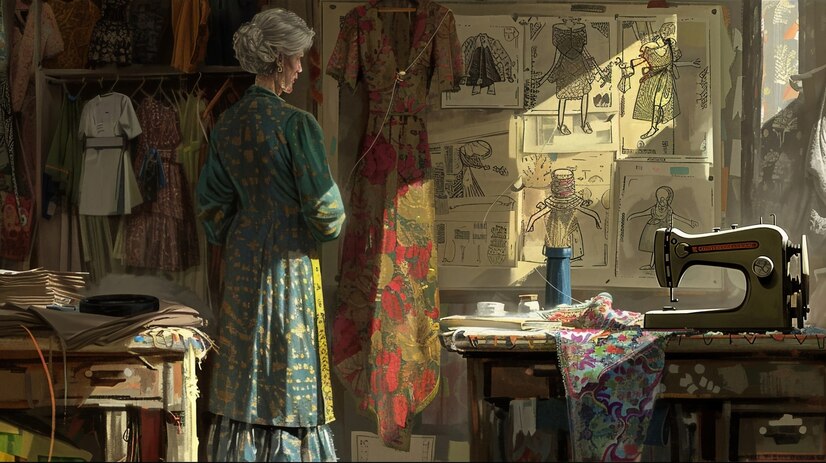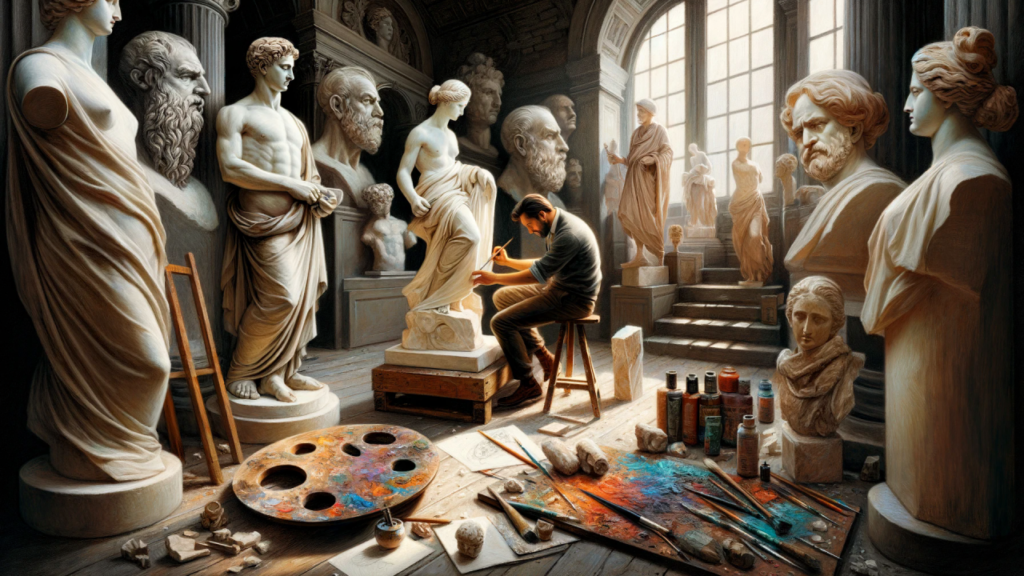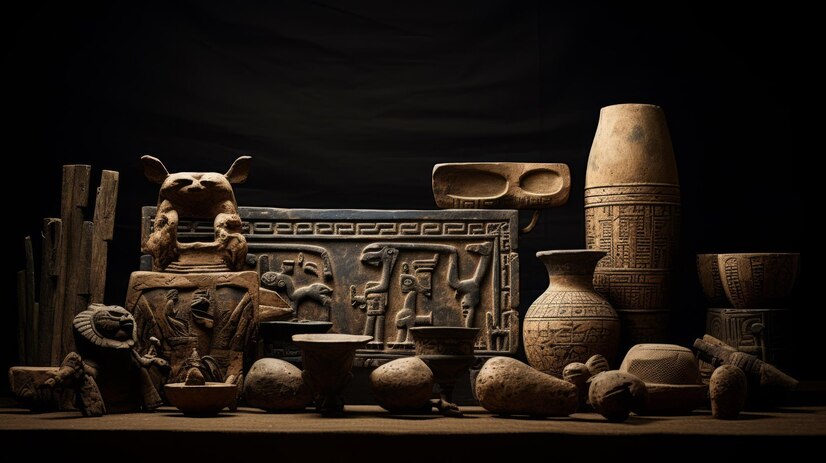In a world constantly racing forward, there’s something “Ancient Artz” profoundly grounding about looking back. For those who find themselves captivated by the intricacies of history and artistic expression, this deep-dive into the world of Ancient Artz is just the ticket.
Ancient Artz isn’t just a relic of the past; it’s a vibrant thread woven into the fabric of our present. From awe-inspiring sculptures to intricate pottery, ancient artworks tell stories that transcend time and culture. Each piece carries whispers of its creators’ lives and beliefs, inviting us to explore worlds long gone yet still incredibly relevant today. As we delve deeper into this captivating realm, we’ll uncover why these masterpieces continue to inspire modern artists and ignite curiosity in every generation. Join us on this journey through history as we celebrate the enduring legacy of Ancient Artz!
Why is Ancient Art Still Relevant Today?
Ancient art remains a vital part of our cultural dialogue today. Its influence permeates various aspects of modern life, from architecture to digital design.
The themes depicted in ancient art resonate deeply with contemporary issues, such as identity and human experience. Every stroke tells a story that transcends time.
Moreover, the craftsmanship showcased in these works serves as an educational resource. Artists and students alike can learn valuable techniques and principles by studying ancient masterpieces.
In a world heavily influenced by technology, ancient art reminds us of our roots. It connects us to our ancestors, fostering appreciation for history and tradition.
This connection encourages creativity while prompting reflection on where we came from and where we’re headed. Ancient art is not just relics; they are living dialogues between past civilizations and present society.
The Role of Ancient Art in Modern Culture

In today’s fast-paced world, ancient art serves as a calming counterpoint, reminding us of the enduring nature of human creativity. It offers a window into the past, helping us understand cultural evolution and providing context for contemporary societal dynamics. Museums and galleries around the world showcase these treasures, inviting people to connect with history in a personal and meaningful way.
Designers, architects, and artists draw inspiration from ancient motifs, patterns, and techniques, infusing them into modern creations. This vibrant dialogue ensures that ancient art remains a vital part of our cultural fabric, enriching our understanding of the world.
Cultural Significance of Ancient Art
Ancient art serves as a vital link to our past, revealing the values and beliefs of long-lost civilizations. Each piece tells a story, offering insights into social structures, religious practices, and everyday life.
Through ancient artifacts, we gain an understanding of cultural identities that have shaped human history. They reflect the creativity and innovation of their time while providing evidence of trade routes and interactions between diverse societies.
Moreover, these works often convey universal themes—love, mortality, spirituality—that resonate with people across generations. The symbolism embedded in sculptures or paintings transcends language barriers.
As we study ancient art forms like pottery or wall murals, we connect deeply with those who created them. This connection fosters appreciation for cultural diversity and shared heritage. It encourages contemplation about how humanity has evolved while still holding onto core expressions through artistic endeavors.
Examples of Famous Ancient Art Pieces
One of the most recognizable examples of ancient art is the Venus of Willendorf. This small statuette, dating back to around 28,000–25,000 BCE, embodies fertility and femininity through its exaggerated features.
The Rosetta Stone also stands out as a remarkable artifact. Discovered in 1799, it was key to deciphering Egyptian hieroglyphs. Its inscriptions celebrate not just language but cultural legacy.
Another treasure is the Parthenon Marbles from Greece. These exquisite sculptures showcase classical ideals of beauty and myth, capturing stories that resonate even today.
In Asia, the Terracotta Army reveals incredible craftsmanship. Buried with China’s first emperor around 210 BCE, these life-sized figures reflect both artistry and historical significance.
Consider Michelangelo’s David—though technically Renaissance art—it draws deeply from ancient Greek influences while embodying humanity’s quest for perfection across time. Each piece tells its own unique story within human history.
Techniques and Materials Used in Ancient Art
Ancient artists employed a variety of techniques and materials that reflected their environment and culture. They often used natural pigments derived from minerals, plants, and even insects to create vibrant colors for their artworks. These pigments were mixed with binders like egg yolk or gum arabic to enhance durability.
Sculptors utilized local stones such as marble or granite, carving detailed figures that showcased human emotions and divine beings. The precision in these works was achieved through tools made of bronze or copper, allowing intricate designs.
In pottery, ancient artisans mastered the art of glazing with silicates baked at high temperatures. This technique not only added aesthetic appeal but also enhanced functionality by making vessels waterproof.
Textile arts flourished too; fibers from flax or wool were dyed with natural dyes before being woven into intricate patterns. Each method carried deep cultural meanings that resonate through time.
How Modern Artists are Incorporating Ancient Art into Their Work

Modern artists are increasingly drawing inspiration from ancient art, creating a vibrant fusion of the old and new. They study traditional techniques, reviving methods that have been lost to time.
Some use motifs and symbols found in ancient cultures. These elements add depth and meaning to contemporary works. You might see tribal patterns or mythological references seamlessly woven into modern narratives.
Others transform ancient artifacts into installations or mixed media pieces. This approach invites viewers to engage with history on a personal level. It sparks dialogue about cultural heritage and memory.
Digital technology is also playing a significant role. Artists can reinterpret ancient styles through digital platforms, reaching wider audiences while preserving their essence.
By embracing these timeless influences, modern creators keep the spirit of ancient art alive, ensuring it resonates in today’s world.
The Impact of Ancient Art on Society and Education
Ancient art serves as a powerful mirror reflecting societal values and cultural narratives. It provides insight into the lives of our ancestors, their beliefs, and aspirations.
In educational settings, ancient art acts as a gateway to understanding history. Students engage with tangible artifacts that tell stories beyond textbooks. This hands-on approach fosters critical thinking and creativity.
Moreover, exposure to ancient works can ignite passion for various subjects like archaeology, anthropology, or design. Art from bygone eras stimulates curiosity about different cultures and perspectives.
Communities also benefit from exploring ancient art’s significance. Public exhibitions encourage dialogue about heritage and identity.
As we study these masterpieces, we build connections across time. Ancient art transcends generations, reminding us of shared humanity while inspiring innovation in contemporary artistry.
Preserving and Protecting Ancient Artifacts
Preserving ancient artifacts is a vital task that requires diligence and care. These treasures tell stories of our past, providing insight into cultures long gone.
The first step in protection is proper storage. Climate control plays a crucial role. Fluctuations in temperature and humidity can damage delicate materials like papyrus or wood.
Conservation techniques often involve experts who understand the nuances of each artifact’s composition. Cleaning, restoration, and stabilization may be necessary to prevent further deterioration.
Public awareness also contributes significantly to preservation efforts. Museums and educational programs help foster appreciation for these historical pieces, encouraging responsible stewardship.
Moreover, legislation protects cultural heritage from illicit trade and destruction. Strong laws ensure that artifacts remain where they belong: as part of humanity’s shared narrative.
Technological advancements are emerging as powerful tools in this field—allowing for better documentation, monitoring, and analysis of ancient art forms without physical contact.
Celebrating the Timeless Beauty of Ancient Art
Ancient art captivates us with its intricate designs and profound meanings. Each piece tells a story, revealing the values and beliefs of civilizations long gone.
The beauty lies in the details—carvings that evoke emotion, colors that have stood the test of time, and forms that speak to our shared humanity. These creations inspire awe as they connect us across centuries.
Artisans used their hands to craft masterpieces without modern technology. Their dedication brings depth to every sculpture, painting, or pottery shard we admire today.
Visiting museums or galleries dedicated to ancient art can be a transformative experience. It immerses us in history while igniting our imagination.
Celebrating ancient art means honoring those who came before us. It reminds us of our roots while encouraging contemporary artists to draw inspiration from these timeless expressions.
Conclusions
Ancient Artz offers a glimpse into the soul of civilizations long gone. Each piece tells its own story, connecting us with our ancestors in remarkable ways.
The techniques and materials used by ancient artisans reveal innovation and creativity that still inspire today’s creators. Through their work, they left behind a legacy that transcends time.
Modern artists are increasingly drawing on these influences, weaving elements of ancient art into contemporary pieces. This fusion breathes new life into age-old traditions while honoring their origins.
Preserving these artifacts is essential for future generations to appreciate the beauty and wisdom embedded within them. Every sculpture or painting is not just an object; it’s a link to our shared human experience.
As we celebrate Ancient Artz, we embrace both history and modernity, fostering a deeper understanding of who we are as a society. The dialogue between past and present continues to enrich our cultural landscape.
FAQs
What is Ancient Artz?
Ancient Artz refers to artistic works created in ancient civilizations, showcasing diverse styles and techniques. These pieces offer a glimpse into the cultures that produced them.
Why is Ancient Art important today?
Ancient Art remains significant as it connects us to our history. It teaches us about past societies, their beliefs, and values, influencing contemporary culture and art.
How can I learn more about Ancient Art?
There are numerous resources available online, such as virtual museum tours, documentaries, books on art history, and courses focusing on specific periods or regions of ancient artistry.
Are there any famous museums dedicated to Ancient Art?
Yes! Museums like The British Museum in London and The Louvre in Paris house extensive collections of ancient artifacts. They provide valuable insights into various civilizations’ artistic expressions.
Can modern artists use techniques from Ancient Art in their work?
Absolutely! Many contemporary artists draw inspiration from traditional techniques used in Ancient Art. This blending creates innovative works while honoring historical methods.
What role does education play in preserving Ancient Art?
Education fosters appreciation for ancient artifacts. Schools incorporate art history into curriculums to instill respect for cultural heritage among future generations.
How can we help preserve ancient artifacts today?
Supporting museums through donations or volunteering is essential. Advocating for policies that protect archaeological sites also plays a critical role in preservation efforts.
Is there an annual event celebrating Ancient Arts?
Various events focus on celebrating these timeless pieces annually worldwide—art festivals, exhibitions at galleries or museums often feature aspects of ancient creativity worth exploring further.





